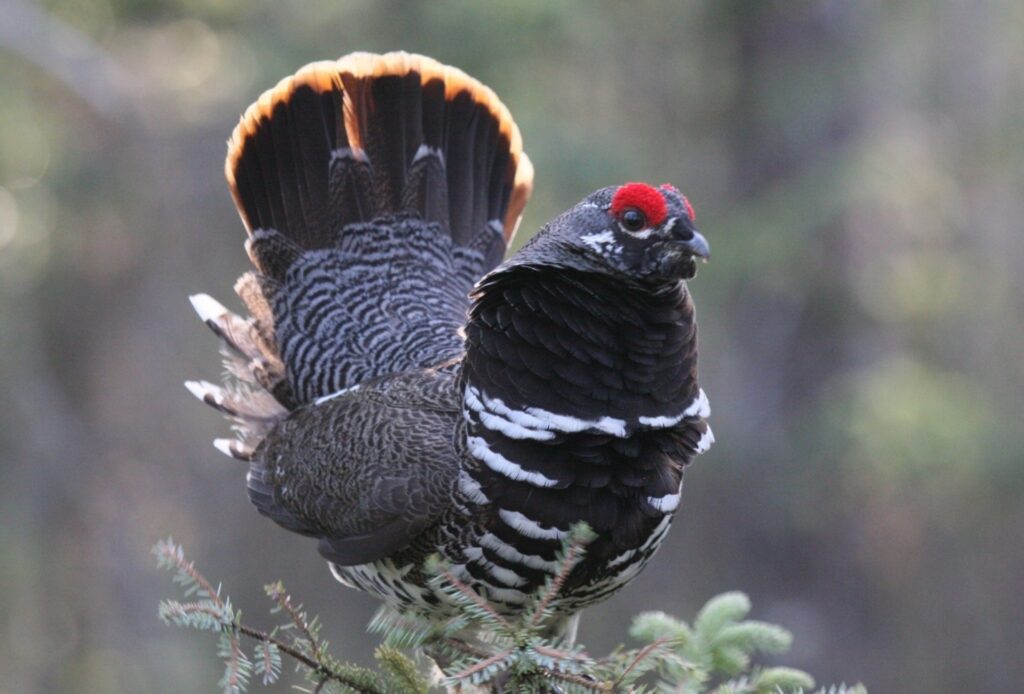By: Janelle Taylor, University of Wisconsin Madison, Department of Forest and Wildlife Ecology
[EDITOR’S NOTE: Janelle Taylor is a Ph.D. candidate examining declines in resident boreal birds across northern Wisconsin. This article introduces her multi-year project set to begin field work in spring 2023. Janelle can be reached at jtaylor8@wisc.edu.]
Climate Change Impacts on Boreal Ecosystems
Earth is approaching a tipping point toward a new “hothouse” planetary state due to human-induced climate change. Amid a warming climate, we are witnessing unprecedented changes to bird communities and their habitats. Northern ecosystems will bear the brunt of climate change, with warming trends two to three times higher than global trends, inevitably contributing to changes in forests and disturbance regimes. Across the Great Lakes region, the boreal forest reaches its southernmost extent, transitioning from spruce (Picea sp.) / fir (Abies sp.) dominated forests to mixed conifers and hardwoods. Northern Wisconsin is home to a suite of boreal bird species living on the trailing edge of their ranges. These bird species occupy lowland, boreal conifer forests year-round, but populations are now in steep decline. Concern regarding this group of imperiled boreal birds has come into focus as populations decrease. Species such as Canada jays (Perisoreus canadensis), boreal chickadees (Poecile hudsonicus), spruce grouse (Canachites canadensis), and black-backed woodpeckers (Picoides arcticus) are considered of high conservation concern.

Canada Jay, Photo Credit: Tom Prestby / WI DNR
Canada Jays
Canada jays are a charismatic and highly intelligent species, known for their curiosity and melodic vocalizations. Canada jays are a caching species and will store food in hundreds of small caches throughout their range, often concealing them with bark or lichen. Moreover, Canada jay caches are uniquely composed of perishable food items including insects, fungi, fruit, and carrion. Canada jays use caches during the winter when food is scarce, and their nesting period begins. Canada jays begin their clutches around March and may rely on their caches as both supplemental for themselves, but also their nestlings.

Boreal Chickadee, Photo Credit: Ryan Brady / WI DNR
Boreal Chickadees
Boreal chickadees possess brown rather than the black head plumage of their common relative. Their vocalizations are also raspier. Like Canada jays, boreal chickadees are caching species, but they include seeds in their diets along with perishable foods.
Spruce Grouse
During the winter, spruce grouse will perch themselves on tree branches and consume conifer needles throughout the season’s duration. They remain largely sedentary during this time and can be difficult to detect in any capacity.

Spruce Grouse, Photo Credit: Nick Anich / WI DNR
Black-backed Woodpeckers
Albeit the rarest of the four species, black-backed woodpeckers are most readily associated with burn areas, but a more appropriate description is that they are a disturbance-obligate species. Fires and large-scale beetle killed forests are not prevalent in northern Wisconsin but can still be found in lowland conifer swamps characterized by black spruce (Picea mariana). These birds are sooty black-colored on their backs with a striking yellow crest (males) and black barring on their sides.

Black-backed Woodpecker, Photo Credit: Ryan Brady / WI DNR
Graduate Research Project
To understand the mechanisms behind boreal bird declines in northern Wisconsin, our research will examine microclimatic variables (elevation, temperature, vegetation, etc.) and use foliar chemical properties to identify possible refugia for this suite of boreal species. During the first year of this project we will re-survey several boreal forest sites that the Wisconsin DNR visited over a decade ago. By replicating their methods, we will make change comparisons between previously surveyed areas and those same areas today. In subsequent years, we will deploy temperature sensors to collect microclimate data and to characterize whether these forests remain suitable for these declining and vulnerable bird populations.
Hoard Rot Experiment
During the winter, caching species including both Canada jays and boreal chickadees’ food caches are at risk of hoard rot. Warming winter temperatures are contributing to decomposition rates of food caches that are important for overwinter survival and feeding young. We will be deploying simulated food caches and compare rates of decomposition between and within sites.
Hope and the Future
While things may look bleak for our boreal birds, research provides insight into these vulnerable communities and helps guide future management actions and conservation efforts, including the protection and enhancement of sites likely to host these species in a future shaped by climate change. Community engagement in the form of public support and citizen science programs such as eBird and Project FeederWatch are invaluable sources for monitoring species and fostering appreciation for our planet.

Photo Credit: Janelle Taylor


